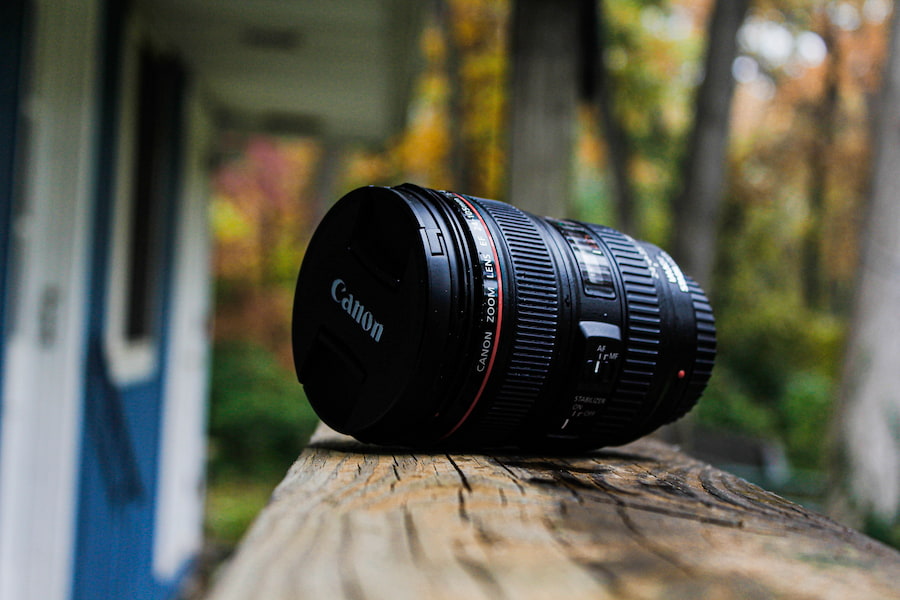
As an Amazon Associate we earn from qualifying purchases.
Wide-angle shots are the bread and butter of real estate photographers. However, there are scenes where you may need a zoomed-in perspective. To help you decide which one to use for interiors or exteriors, I'm explaining the similarities and differences between the Canon 24-70 vs 24-105 lenses.
Quick Navigation
The 24-70mm and 24-105mm are among Canon's sought-after lenses. While they share some features, they are still designed with varying purposes in mind.

The Canon EF 24-70mm is often called the walk-around lens for wide-angle shots, close-up portraits, and everything in between. The human eye heavily influences its focus range. With the absence of distortion, this makes it easier for beginner photographers to learn how to compose shots, even in low-light environments.
The 24mm aspect of this lens provides no ultra-wide-angle distortion, making it ideal for just focusing on the optimum arrangement of elements. The focal length range of this lens also allows you to capture a wide range of shots in a single session without changing lenses frequently.
The longer focal length range and image stabilization of the Canon EOS 24-105mm make it appealing for real estate photographers. It gained popularity in 2005 when the brand distributed it as a kit lens bundled with a full-frame camera. It's also among the first lenses from the L series with improved optics and ergonomics.
With 24mm, you can include the foreground without making the background appear too small. At 105mm, you can capture much of what is farther away without repositioning your body or the tripod.

The Canon 24-105mm and 24-70mm lenses share similarities and differences that can either improve your skills or limit your
These two lenses have a very similar design, including look, and can be used interchangeably in many situations. These aspects also make it convincing to consider investing in both lenses.
You could wonder if you should acquire a 24-70mm or a 24-105mm lens. There are arguments for and against each lens based on differing features that can influence image quality.
The focal length is the most notable difference between the two lenses. While they both start at 24mm, one can only zoom up to 70mm, while the other has a telephoto zoom capacity of up to 105mm.
This refers to the narrowest angle of view at the longest end. The Canon EF 24-105mm can make subjects appear larger when zoomed in at 105mm because it can cover a 23-degree angle of view, fitting a smaller portion of a scene than the 24-70mm's 34 degrees.
This implies a ratio between the shortest and longest focal lengths of lenses. The 24-105mm has a 4.37x optical zoom, while the 24-70mm only has a 3x magnifying power. This would only matter if you typically shoot zoomed-in images.
Image distortion on lenses is the bane of real estate photos, as it can make columns or walls appear curved, ruining the selling factor of the image. The 24-70mm has 0.5% less distortion than the other, resulting in minimal to no contorted lines in image quality.
Only the Canon EF 24-105mm offers built-in image stabilization that prevents camera shake, particularly when using a faster shutter speed. This feature enables the sensors to detect camera vibrations and adjust the optics accordingly. As a result, the lens corrects any motion blur due to slow shutter speeds before capturing a photo.
The 24-105mm has one less aperture blade than the 24-70mm. In practice, this controls how much light gets through the sensor. More blades enable the 24-70mm to capture more light with its constant aperture of f/2.4, bigger than 24-105mm's f/4.
While they measure 3.3 inches wide, the 24-70mm is 0.7 inches longer than the 24-105mm. In terms of weight, the 24-70mm is 0.6 mm heavier than the other one. The slight difference in length and weight is due to the number of aperture blades.

The main difference between the two is that the Canon 24-70mm is a wide-angle zoom lens, whereas the 24-105mm is a wide-short telephoto lens. However, the 24-70mm has a bigger maximum aperture at f/2.4, while the 24-105mm is only at f/4.
You can use the Canon EF 24-70 in various
The 24-105mm also suits branding, wedding, landscape, and real estate
Consider where, how, and what you'll be photographing as well. The 24-105mm is the better all-arounder, particularly if you need image stabilization for outdoor, event, and portrait
On the other hand, the 24-70mm is the way to go if you're usually shooting in locations with various lighting scenarios and subjects with leading lines. The wider aperture also provides a shallower depth of field, capturing a larger area in focus, particularly for real estate interiors.

The Canon 24-70mm is worth it if you're looking for a general-purpose, walk-around lens. As long as you maximize its features properly, it will be worth investing in, regardless of your photography niche.
The Canon 24-105mm lens is worth it if you need a greater zoom capacity than the 24-70mm. It's a versatile lens for various types of photography.
Opt for the 24-70mm lens if you need a standard lens for real estate photography. However, if you need a more powerful zoom lens, that's when you can consider the 24-105mm.
Before pairing your modern cameras with a suitable flash, you should invest in high-quality camera lenses if you want to do more than just capture pictures. Both the Canon 24-70mm and 24-105mm are worth investing in, although you should still consider which features would benefit the image quality of your real estate shots the most.
